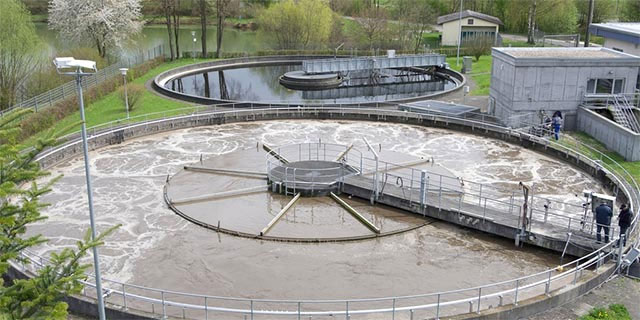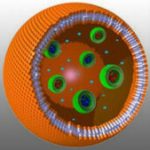It might sound unusual, but it is the subject of a recent study published in the American Chemical Society journal Biomacromolecules. Advances in a new form of bio-coating incorporating bacteria might open the way for significant advancements in future waste treatment, biomass or biofuel gas production.
Experts from the University of Surrey (UK) have examined and enhanced a variety of biocoating features, including a polymeric layer that envelops microorganisms. The bacteria cannot grow or divide on their own once within the mantle, although they can still perform certain beneficial functions, such as absorbing toxic chemicals or carbon dioxide. In reality, there has been a lot of previous research focused on the manufacture of bio-coats with the aforementioned bactericidal qualities, but in most cases the bacteria do not live long, limiting their utility in practice.

Bacteria might prove highly effective in wastewater treatment.
Moreover, biological coatings must have a porous structure to allow water and nutrients to enter and support the bacteria while enabling process byproducts to escape.
The University of Surrey researchers have concentrated on developing solutions to overcome the problem of permeable structures in order to increase the effectiveness of the employment of bacteria in waste treatment and the generation of biomass and biofuel gas. The biological covering is essential for the survival of bacteria on the inside. The researchers employed a microtube system created of Halloysite, an aluminosilicate clay mineral having the experimental formula Al₂Si₂O₅ (OH).
This material’s primary components are oxygen, silicon, aluminum, and hydrogen, and it has the benefit of being easy to acquire, inexpensive in cost, and previously utilized as a reinforcing agent for plastic polymers. These tiny Halloysite tubes will form tunnels in the biocoating, increasing permeability.
The scientists discovered that bacteria enclosed in a Halloysite biocoating might live longer than bacteria in a normal biocoat using a specifically calibrated resazurin reduction experiment. They discovered that a coating composed of 29% halloysite provided the optimal combination of mechanical strength and permeability. Under the fluorescent microscope, the bacteria can be observed to remain alive and metabolically active for an extended period of time. Because of their capacity to eliminate dangerous substances, living bacteria can be employed to clean polluted water.
“This is an interdisciplinary study with strong ties between physics and microbiology. we can make a breakthrough in biocoating”, said Joe Keddie, a soft matter physics professor at the University of Surrey and a part of the research team.
Most bacteria are beneficial, and without them, many fundamental activities in daily life would cease to exist. Sustaining bacteria viability in biological coatings is crucial for properly utilizing them in a range of functions, including waste treatment.
According to khoahoc.tv










